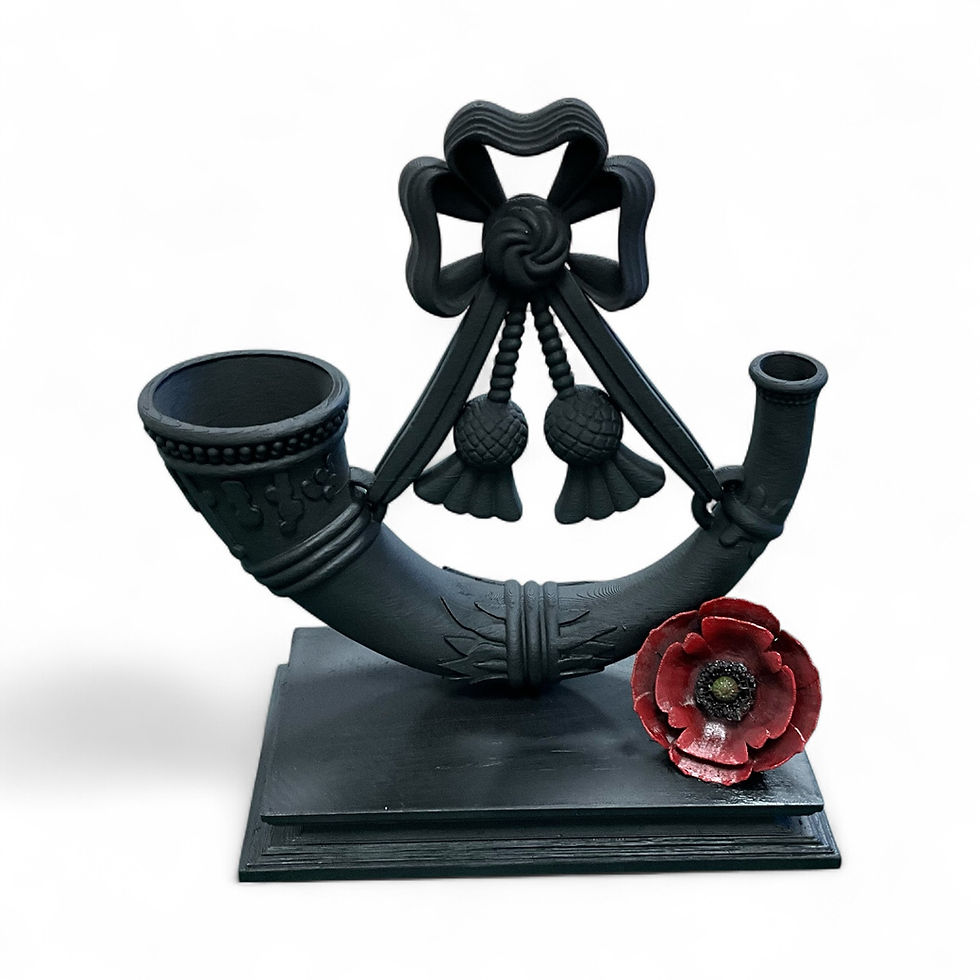🪖 The History of the Light Infantry and the Evolution of its Cap Badge
- Mike Smith
- Oct 16
- 3 min read
Updated: Oct 17
The Light Infantry was one of the most distinguished regiments in the British Army — a proud formation built on speed, agility and service. Created in 1968 through the amalgamation of four historic light infantry regiments, it carried forward centuries of regimental tradition and identity.
One of the most recognisable emblems of the regiment was its distinctive cap badge. This iconic design evolved through the years but always kept its heart: the bugle horn — a symbol of communication, swiftness and the spirit of the light role soldier.
📜 Origins of the Light Infantry
The story of the Light Infantry reaches back long before 1968. Light infantry units were originally trained to move quickly, operate ahead of the main force, and engage in skirmishing tactics. They were sharp, fast and adaptable — soldiers who relied on mobility rather than heavy firepower.
Among the regiments that formed its foundation were:
The Somerset and Cornwall Light Infantry
The King’s Own Yorkshire Light Infantry
The Durham Light Infantry
The King’s Shropshire Light Infantry
In 1968, these proud regiments were brought together to form The Light Infantry. The new regiment inherited an impressive lineage and went on to serve in some of the most challenging theatres of the modern era, including Northern Ireland, the Falklands, Iraq and Afghanistan.
🪶 The Evolution of the Cap Badge
The cap badge of the Light Infantry is among the most easily recognised in the British Army. Its design is centred on the bugle horn, a symbol dating back to the Napoleonic Wars.
When light infantry units operated on the battlefield, they used bugle calls to relay orders rapidly. Where line infantry might rely on drums, the light infantry’s horn allowed swift, flexible manoeuvre — the hallmark of their role.
Although there were slight variations through regimental histories, the final Light Infantry badge retained the plain bugle horn with its distinctive knotted string, surmounted by a crown. Worn proudly on berets and forage caps, it became a symbol instantly associated with the regiment’s spirit and identity.

Explore our Flanders Forged range here www.oathsofallegiance.co.uk/product-page/flanders-forged
⚔️ Amalgamation into The Rifles
In 2007, The Light Infantry was amalgamated into The Rifles, becoming part of the largest infantry regiment in the British Army. This marked a new chapter in its story — but not the end of its identity.
The bugle horn remains at the centre of The Rifles cap badge today, a clear and deliberate tribute to the Light Infantry’s enduring legacy.
🕊 A Legacy Remembered
For those who served, the Light Infantry is more than a name — it’s a brotherhood. Its history is preserved through regimental associations, museums, parades and, of course, through the badge itself.
That small bugle horn represents generations of soldiers who stood ready, moved swiftly, and served with pride.
❓FAQ
Q: When was The Light Infantry formed?A: It was formed in 1968 through the amalgamation of four historic light infantry regiments.
Q: What does the Light Infantry cap badge represent?A: The bugle horn symbolises speed, light role tactics and battlefield communication — key elements of the regiment’s identity.
Q: What regiment succeeded the Light Infantry?A: In 2007, The Light Infantry became part of The Rifles, and its legacy continues through their cap badge.




Comments